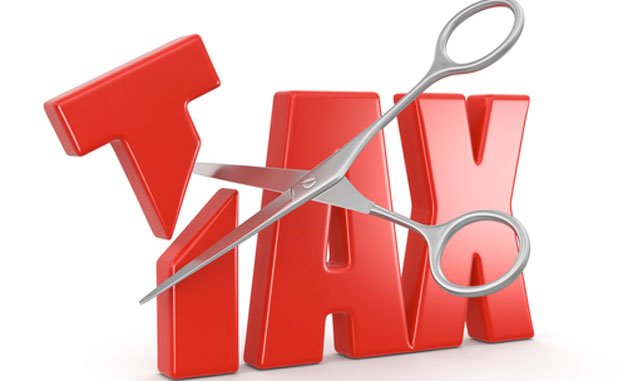The Coweta County Board of Education voted 7-0 to lower the 2023 school system property tax rate to 15.41 mills, at a called board meeting Thursday night. It was the fourth year in a row that the board has reduced school system millage rates in response to rising tax digest values. However, the reduction still results in a 9.5% increase in total property taxes collected in Coweta because of increased value of taxable property.
Contrast that with Fayette County, which is raising its millage rate to 19.15 mills and taxes collected by 12% over last year, while preparing to tighten its budget belt with larger class sizes and a teacher hiring freeze.
The Coweta school board lowered the school maintenance and operation (M&O) tax rate by 0.59 mills, down from 16.00 mills set in 2022. The board also set the property tax millage for bond debt at 0.00 mills, since the school system operates without capital project debt.
The millage rate is the rate applied to local property taxes, which provides the Coweta school system with approximately half of its funding for maintenance and operations of the school system. The Coweta board set this year’s school tax rate after three public hearings on July 27 and August 3, and voted to set this year’s rate at a 7:00 p.m. called board meeting following the third hearing.
The resulting millage rate is the lowest school property tax in Coweta County since 1983.
The 15.41 mill rate will lead to an estimated 9.52% increase in local school system tax revenues over a projected rollback rate of 14.08 mills this year.
However, increases in the value of real and personal property in Coweta County from 2022 to 2023 will also, under state law, lead to an anticipated decrease in state educational funding of approximately $6 million under state school funding formulas going forward, because of “Local Fair Share” calculations required in Georgia’s school funding formula.
Local Fair Share requires school systems to levy 5 mills of the total of their local tax digest in order to participate in State Quality Basic Education funding, and an equivalent amount is deducted from school systems’ state earnings. As Coweta’s local tax digest grows, so does the value of a mill, and so does the amount of Coweta’s subtracted state funding under Local Fair Share.
The total Local Fair Share amount for Coweta was $37.4 million for FY 2023, and is projected to increase to $43.4 million this year (FY2024), representing a decrease in state funding of approximately $6,000,000. The two year decrease for the school system has been $14.4 million.
During Coweta’s three school millage hearings, Superintendent Evan Horton and school system Assistant Superintendent for Finance Keith Chapman noted that the Local Fair Share calculation in Georgia school funding makes it different when local school boards attempt to meet the state’s rollback calculation for local taxes, compared to other local governments.
Horton and Chapman said that this year’s recommended local school tax rate aims to break even between local revenue and reductions in state funding precipitated by the increase in the local tax digest in funding the school system’s FY2024 operational budget, which was adopted in June of this year.
“What we’re trying to do at 15.41 is get us as close to revenue neutral as we can possibly be,” in meeting the school system’s budget, said Horton. “We absolutely have to live up to our responsibilities to our students and to our employees and to this community” Horton said. “The other piece of that is, though, is to try our best to be responsive to the community and to homeowners and property owners… This recommendation gets us to what we need, and not any more.”
The reduction in this year’s school millage rates follows several years of local property value growth, in Coweta and other counties around the state, since 2020. The Coweta County School board has responded to those increases with reductions in the local school tax rate for each of the last 4 years.
For over 15 years, between 2003 and 2020, the school system’s millage rate remained steady at 18.59 mills. In 2020 the board lowered millage rates from 18.59 to 17.33 mills, then to 17.14 in 2021, and to 16.00 mills last year. A rate of 15.41 “brings us to the lowest rate since fiscal year 1983,” said Horton. The school board also increased local senior citizen homestead tax exemptions in 2020 through a local referendum.
Coweta rate more than 3 mills lower than Fayette
In addition to being the lowest Coweta school tax rate in 41 years, Horton also noted that the 15.41 mill tax rate set by the board will be among the lowest rates in the metro Atlanta and West Georgia regions. 2022 rates for several surrounding or comparable school system’s include:
Fayette County Schools – 19.15 mills
Cherokee County Schools – 17.95 mills
Carroll County Schools – 17.50 mills
Forsyth County Schools – 17.30 mills
Troup County Schools – 17.35 mills
Heard County Schools – 14.454 mills
Spalding County Schools – 16.742 mills
Floyd County Schools – 17.95 mills
Henry County Schools – 20.00 mills
Douglas County Schools – 19.50 mills
Fulton County Schools – 17.24 mills
Rockdale County Schools – 21.00 mills
Lowering Coweta’s tax rate to 15.41 “helps us to be competitive” as a community,” said Horton. “It helps us remain a very attractive place where people want to live and do business” compared to other communities.







Leave a Comment
You must be logged in to post a comment.